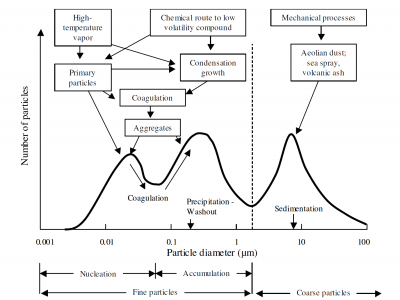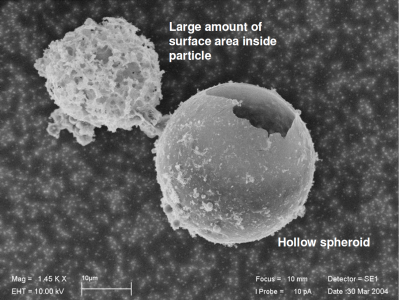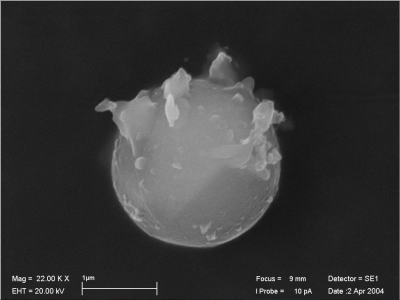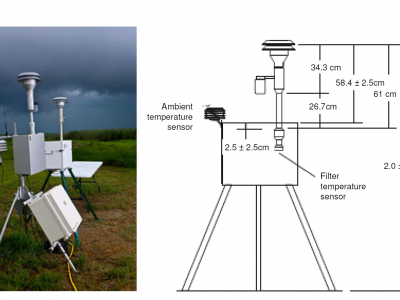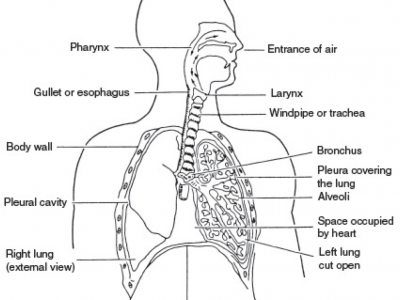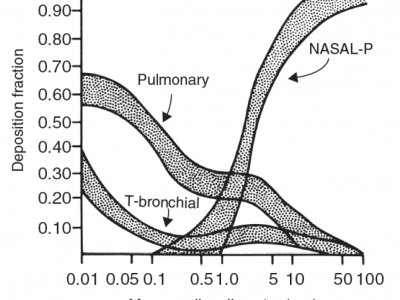Antibiotic Resistance and Dual Use
This informational article by Daniel A. Vallero serves as a starting point for group discussion of the possible misuse of emerging technologies. It is accompanied by an annotated presentation that addresses emerging technologies and ethical decision-making.
Introduction and Background
Molecular biology has both advanced the state of the science of antibiotics and caused them to present vexing problems. Antibiotics are chemicals that interfere with metabolic processes and inhibit the growth of or kill microbes, especially bacteria. The mechanisms of antibiotics vary. Penicillin and vancomycin, for example, cause lysis in gram-positive bacteria (i.e. they are narrow spectrum) by obstructing their ability to synthesize cell walls. Conversely, tetracyclines affect both gram-positive and gram-negative bacteria (i.e. broad spectrum) by binding to ribosomes, thereby impeding the production of proteins and limiting their activity.
The dilemma of dual use illustrates the various scientific perspectives involved in a real-world problem. Bacterial resistance to antibiotics is a real and growing problem in the medical community. Tuberculosis, malaria, ear infections and numerous other diseases are becoming increasingly difficult to treat. For example, tuberculosis cases in the developed world were almost completely eliminated shortly after discovery of the pharmaceutical isoniazid in 1940, but the emergence of resistant strains that can only be treated with less effective drugs is very dangerous to public health. The sources are varied. For example, about 2 million patients contract bacterial infections in hospitals each year, known as nosocomial infections. Immunocompromised patients are particularly vulnerable to infections of Staphylococcus aureus, which is commonly found in hospitals, leading to pneumonia and other ailments. Isolated strains of S. aureus are now found to be resistant to previously efficacious antibiotics, including methicillin, oxacillin, penicillin and amoxicillin. Some strains are even resistant to vancomycin, the antibiotic prescribed by physicians after exhausting other options.
A gene in Yersinia pestis, the causative agent of the plague, was isolated in 2006 and was found to be similar to an Escherichia coli gene known to cause multiple types of antibiotic resistance.
Antibiotic resistance is genetically encoded. Numerous microbes produce antibiotic compounds to protect themselves from other microbes, and as a result, some of these microbes have evolved to be resistant to them. Spontaneous mutations can also produce resistance genes which can be passed on to future generations via genetic exchange processes. For instance, bacteria may transfer a circular strand of DNA (i.e. plasmid) external to its chromosome to another bacterium through conjugation. Bacteria may also get genes that have been released from dead bacteria, incorporating them into their chromosome or plasmid through transformation. A third means is transduction, whereby a bacterial virus (i.e. bacteriophage) invades the bacterial cell and removes genetic material. When the bacteriophage infects another cell, that gene may be incorporated into the other cell’s chromosome or plasmid.
Team Challenge
The following material suggests a potential "dual use" for drug-resistant bacteria. Such uses (beyond mere scientific inquiry) could pose a threat to human safety and well-being. Many other examples of dual-uses for new technology also exist. Take a couple minutes to share each member’s expertise that is available to the group. Each member should read the following discussion, skimming the sections not directly related to your research interests (but trying to get some sense of the importance). For example, if your research is steeped in physics, you should help your group understand the salient facts about aerosols and why they may influence this case. If your research is more biomedical, you should give insights about this. If social sciences or humanities, you should provide this expertise. After reading, decide on important facts, uncertainties (including asking for more details), and possible meaning. Then answer the questions at the end.
The Problem
It is quite common in biological laboratories to make antibiotic-resistant bacterial strains by plasmid-insertion of genes to express resistance to a known antibiotic. A major problem with this practice is that this resistance can transferred from one type of bacteria to another by way of a single gene. This is a classic case in which different parts of the scientific community working on disparate projects can coalescence for good or for evil…. That is, we must ask whether our research is contributing to a potential dual use problem. In this case, could biological weapons be developed using these antibiotic resistant pathogens?
An important consideration is practicality, or at least plausibility. In this instance, the dual use is not science fiction. During the 1980’s the Soviet Union developed antibiotic-resistant strains of plague, anthrax, tularemia, and glanders bacteria. The Iraqi regime of Saddam Hussein focused on anthrax, botulinum toxin and aflatoxin.
Biological researchers must consider that there are possible uses, possibly not even considered in the quest to provide needed medical advances that may have profound and disastrous dual uses.
In addition, the combination of molecular biology and the physical sciences must be considered. For example, not only the biological practice of gene insertion and ancillary medical research presents problems in security and disease prevention, but so do the means by which the bacteria and other biological materials are transported.
Aerosol science is a major part of most environmental research programs. It addresses the ways that particulate matter moves and changes in the atmosphere and in other environmental compartments.
Nebulizers are devices that are used to deliver drugs. Aerosolization has become an important part of biomedical engineering with increasingly sophisticated methods adding to the effectiveness of medical treatment of asthma and other pulmonary diseases. Nebulizers are needed for immediate delivery of deep doses of medicines to the lungs, with research matching the deposition sites in the lung with the type of drug being delivered. Stokes Law states:
Fd=6πμRV (1.2)
Where, Fd is the frictional force (Newtons), μ is the fluid's dynamic viscosity (Pascal seconds), R is the radius of the spherical object (meters), and V is the particle's velocity (in m s-1). Thus, Stokes Law explains how the radius of a sphere and the viscosity of a fluid predict the force needed to move it without settling. So, then, drug delivery to the lungs can be optimized by accounting for the density, morphology and dynamics of the particle.
Particulate matter (PM) is a common physical classification of particles.
Fig. 1. Prototypical size distribution of tropospheric particles with selected sources and pathways of how the particles are formed. Dashed line is approximately 2.5 μm diameter. Adapted from: United Kingdom Department of Environment, Food, and Rural Affairs, Expert Panel on Air Quality Standards, 2004, Airborne Particles: What Is the Appropriate Measurement on which to Base a Standard? A Discussion Document.
Fig. 2. Scanning electron micrograph of coarse particles emitted from an oil-fired power plant. Diameters of the particles are greater than 20 µm optical diameter. Both particles are hollow, so their aerodynamic diameter is significantly smaller than if they were solid. Source: Source characterization study by R. Stevens, M. Lynam and D. Proffitt, 2004. Photo courtesy of R. Willis, Man Tech Environmental Technology, Inc., 2004; used with permission.
Fig. 3. Scanning electron micrograph of spherical aluminosilicate fly ash particle emitted from an oil-fired power plant. Diameter of the particle is approximately 2.5 µm. Photo courtesy of R. Willis, Man Tech Environmental Technology, Inc., 2004; used with permission.
The term “aerosol” is often used synonymously with PM. An aerosol can be a suspension of solid or liquid particles in air, and an aerosol includes both the particles and all vapor or gas phase components of air.
Since very small particles may remain suspended for some time, they can be particularly problematic from a pollutant transport perspective because their buoyancy allows them to travel longer distances. Smaller particles are also challenging because they are associated with numerous health effects (mainly because they can penetrate more deeply into the respiratory system than larger particles).
Generally, the mass of PM falling in two size categories is measured, i.e. ≤ 2.5 micron diameter, and ≥ 2.5 micron ≤ 10 micron diameter. These measurements are taken by instruments (See Fig. 4) with inlets using size exclusion mechanisms to segregate the mass of each size fraction (i.e. “dichotomous” samplers). Particles with diameters ≥ 10 microns are generally of less concern, however, they are occasionally measured if a large particulate emitting source (e.g. a coal mine) is nearby, since these particles rarely travel long distances.
Fig. 4. Photo and schematic of sampling device used to measure particles with aerodynamic diameters ≤ 2.5 microns. Each sampler has an inlet (top) that takes in particles ≤ 10 microns. An impacter downstream in the instrument cuts the size fraction to ≤ 2.5 microns, which is collected on Teflon filter. The filter is weighed before and after collection. The Teflon construction allows for other analyses, e.g. X-ray fluorescence to determine inorganic composition of the particles. Quartz filters would be used if any subsequent carbon analyses are needed. Photo and schematic courtesy of U.S. EPA. (U.S. Environmental Protection Agency (2010). Air Monitoring on Gulf Coastline; http://www.epa.gov/bpspill/air.html#datarep; accessed on June 30, 2010.)
Mass can be determined for a predominantly spherical particle by microscopy(either optical or electron), by light scattering and Mie theory, by the particle’s electrical mobility, or by its aerodynamic behavior. However, since most particles are not spherical, PM diameters are often described using an equivalent diameter, i.e., the diameter of a sphere that would have the same fluid properties. Another term, optical diameter, is the diameter of a spherical particle that has an identical refractive index as the particle. Optical diameters are used to calibrate the optical particle sizing instruments, which scatter the same amount of light into the solid angle measured.
Diffusion and gravitational settling are also fundamental fluid phenomena used to estimate the efficiencies of PM transport, collection, and removal processes, such as in designing PM monitoring equipment and ascertaining the rates and mechanisms of how particles infiltrate and deposit in the respiratory tract. Only for very small diameter particles is diffusion sufficiently important that the Stokes diameter is often used. The Stokes diameter for a particle is the diameter of a sphere with the same density and settling velocity as the particle. The Stokes diameter is derived from the aerodynamic drag force caused by the difference in velocity of the particle and the surrounding fluid. Thus, for smooth, spherical particles, the Stokes diameter is identical to the physical or actual diameter. The aerodynamic diameter (Dpa) for all particles greater than 0.5 micrometer can be approximated
Dpa=Dps √ρp (1.3)
If the units of the diameters are in μm, the units of density are g cm-3.
Fine particles (< 2.5µm) generally come from industrial combustion processes and from vehicle exhaust. As mentioned, this smaller-sized fraction has been closely associated with increased respiratory disease, decreased lung functioning, and even premature death. This is probably due to the ability to bypass the body’s trapping mechanisms such as cilia in the lungs and nasal hair filtering. Some of the diseases linked to PM exposure include aggravation of asthma, chronic bronchitis, and decreased lung function.In addition to inherent toxicity and health impacts, PM can have numerous other deleterious effects. It is a major contributor to reduced visibility, including near national parks and monuments. Particles can also be transported long distances and can function as vehicles for transporting and transforming chemical contaminants. Acid, for example, can be deposited in the environment in either a dry or wet state. Either way, particles play a part in acid rain. In the first case, the dry particles enter ecosystems and potentially reduce the pH of receiving waters. In the latter, particles are washed out of the atmosphere and, in the process; lower the pH of the rain. Other compounds that are highly sorptive and that have an affinity for organic matter can use particles as a means for long-range transport as well. The same transport and deposition mechanisms can lead to exposures to persistent organic contaminants like dioxins and organochlorine pesticides, and heavy metals like mercury that have sorbed in or on particles. Charge differences between the particle and ions (particularly metal cations) will also make particles a means by which contaminants are transported.
The human body and other biological systems have a tremendous capacity for the uptake of myriad types of chemicals and either utilize them to support some bodily function or eliminate them. As analytical capabilities have improved, increasingly lower concentrations of chemicals have been observed in various parts of the body. Some of these chemicals enter the body by inhalation.
The primary function of the human respiratory system is to deliver O2 to the bloodstream and to remove CO2 from the body. These two processes occur concurrently as the breathing cycle is repeated. Air containing O2 flows into the nose and/or mouth and down through the upper airway to the alveolar region, where O2 diffuses across the lung wall to the blood-stream. The counterflow involves transfer of CO2 from the blood to the alveolar region and then up the airways and out the nose. Because of the extensive interaction of the respiratory system with the surrounding atmosphere, air pollutants or trace gases can be delivered to the respiratory system.
The anatomy of the respiratory system is shown in Fig. 5. This system may be divided into three regions: the nasal, tracheobronchial, and pulmonary. The nasal region is composed of the nose and mouth cavities and the throat. The tracheobronchial region begins with the trachea and extends through the larger bronchial tubes. The pulmonary region is composed of the terminal bronchi and alveolar sacs, where gas exchange with the circulatory system occurs. Figure 5 illustrates the continued bifurcation of the trachea to form many branching pathways of increasingly smaller diameter by which air moves to the pulmonary region. The trachea branches into the right and left bronchi. Each bronchus divides and subdivides at least 20 times; the smallest units, bronchioles, are located deep in the lungs. The bronchioles end in about 3 million air sacs, the alveoli.
The behavior of particles and gases in the respiratory system is greatly influenced by the region of the lung in which they are located.
Particle behavior in the lung is dependent on the aerodynamic characteristics of particles in flow streams. In contrast, the major factor for gases is the solubility of the gaseous molecules in the linings of the different regions of the respiratory system. The aerodynamic properties of particles are related to their size, shape, and density. The behavior of a chain-type particle or fiber may also be dependent on its orientation to the direction of flow. The deposition of particles in different regions of the respiratory system depends on their size. The nasal openings permit very large dust particles to enter the nasal region, along with much finer airborne particulate matter. Particles in the atmosphere can range from less than 0.01 μm to more than 50 μm in diameter. The relationship between the aerodynamic size of particles and the regions where they are deposited is shown in Fig. 6. Larger particles are deposited in the nasal region by impaction on the hairs of the nose or at the bends of the nasal passages. Smaller particles pass through the nasal region and are deposited in the tracheobronchial and pulmonary regions. Particles are removed by impacts with the walls of the bronchi when they are unable to follow the gaseous streamline flow through subsequent bifurcations of the bronchial tree. As the airflow decreases near the terminal bronchi, the smallest particles are removed by Brownian motion, which pushes them to the alveolar membrane.
Fig. 5. Anatomy of the human respiratory system. Source: D.A. Vallero (2008). Fundamentals of Air Pollution. 4th Edition. Elsevier Academic Press. Burlington, MA.
Fig. 6. Particle deposition as a function of particle diameter in various regions of the lung. The nasopharyngeal region consists of the nose and throat; the tracheobronchial (T-bronchial) region consists of the windpipe and large airways; and the pulmonary region consists of the small bronchi and the alveolar sacs. Source: Task Group on Lung Dynamics (1996). Health Physics. 12: 173.
The respiratory system has several mechanisms for removing deposited aerosols. The walls of the nasal and tracheobronchial regions are coated with a mucous fluid. Nose blowing, sneezing, coughing, and swallowing help remove particles from the upper airways. The tracheobronchial walls have fiber cilia which sweep the mucous fluid upward, transporting particles to the top of the trachea, where they are swallowed. This mechanism is often referred to as the mucociliary escalator. In the pulmonary region of the respiratory system, foreign particles can move across the epithelial lining of the alveolar sac to the lymph or blood systems, or they may be engulfed by scavenger cells called alveolar macrophages. The macrophages can move to the mucociliary escalator for removal. For gases, solubility controls removal from the airstream. Highly soluble gases such as SO2 are absorbed in the upper airways, whereas less soluble gases such as NO2 and ozone (O3) may penetrate to the pulmonary region. Irritant gases are thought to stimulate neuroreceptors in the respiratory walls and cause a variety of responses, including sneezing, coughing, bronchoconstriction, and rapid, shallow breathing. The dissolved gas may be eliminated by biochemical processes or may diffuse to the circulatory system.
Since the location of particle deposition in the lungs is a function of aerodynamic diameter and density, changing the characteristics of aerosols can greatly affect their likelihood to elicit an effect. Larger particles (> 5µm) tend to deposit before reaching the lungs, especially being captured by ciliated cells that line the upper airway. Moderately sized particles (1 to 5µm) are more likely to deposit in the central and peripheral airways and in the alveoli but are often scavenged by macrophages. Particles with an aerodynamic diameter less than 1µm remain suspended in air and are generally exhaled. Recent studies have shown that large drug particles may be able to evade macrophages past the ciliated cells of the upper respiratory tract and deep into the lungs.
Recently, scientists have taken advantage of these characteristics of lung mechanisms and of Stokes Law to “improve” the physics of the aerosol so that more medicine is delivered to the target locations, overriding or passing by the body’s mechanisms for removal. Optimal particle slip, shape, and density, as well as porosity of the particles have been changed to deliver “drug particles that are large enough to evade macrophages past the ciliated cells of the upper respiratory tract and deep into the lungs."
Indeed, as the researchers postulated:
…large porous particles of insulin stayed active in rat lungs for 96 hours, 15 times longer than the longest-acting aerosol on the market. They also found that porous particles embedded with testosterone effectively raised blood hormone levels for extended periods. In the case of estradiol (a potent female sex hormone) delivered as an aerosol into the lungs of rats, bioavailability approached 87%, a much higher percentage than previously achieved. Such enhanced efficiencies permit prescribed medicines to be taken at less frequent intervals and at lower doses, thereby improving convenience. Future applications may include not only obvious pulmonary disorders such as asthma, but also inhalant delivery of insulin, testosterone, estradiols, and monoclonal antibodies for treating viral diseases.
It did not occur to the researchers that while the porous particle technology holds tremendous promise for improving drug inhalants, they may have introduced a mechanism by which the natural defenses of respiratory system could be overridden. Specifically, any deep lung penetration of spores (e.g. anthrax) would increase their lethality since a greater number of spores would penetrate more deeply into the lungs. Pathogenic microbes would also become more virulent (e.g. pneumonic plague, tularemia, Q fever, smallpox, viral encephalitis, viral hemorrhagic fevers, and botulism). Subsequently, the researchers have recognized the new opportunity for "reverse engineering" of an inhaled drug delivery system, which would increase vulnerabilities in public health and national security.
Seminar Questions
- What are the important steps that should be taken to prevent dual use problems?
- Can you think of anything in your research that, under the right mix of variables and events, could to lead to dual use problems?
- How about the dynamics of your research lab/center/department? Could safety, risk, unintended outcomes, etc. be better addressed? How?
- What other biochemodynamic factors should be considered for public health protection? … for preventing terrorist acts?
- What are the similarities and differences in considerations of dual use as it applies to engineers, agricultural scientists, microbiologists, medical researchers, social scientists, policy and humanities researchers?
- How might a reductionist versus a systems view differ (or possibly complement one another) in addressing this dual use problem and preventing possible negative outcomes from environmental biotechnologies?
- What other factors need to be considered to prevent a dual use problem?

